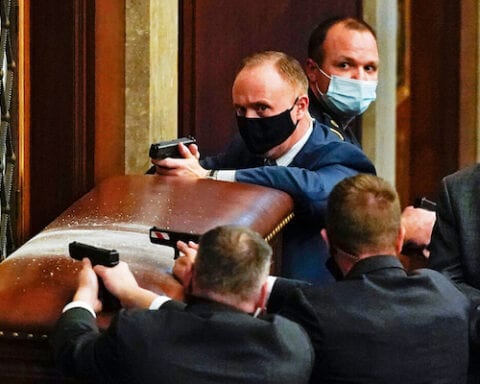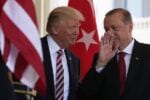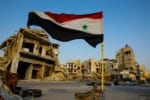The shadows of the Russian Air Force have been covering the ground of Deir Ezzor, striking Islamic State positions throughout. From moonless nights to full moon, every effort has been made to mercilessly strike the entrenched enemy, all in anticipation of the grueling ground battle which is to come. Deir Ezzor is the last major stronghold for the Islamic State in Syria.
On September 5th, just after 1400 local time, the men at the besieged Syrian Army 137th Artillery base saw the initial results of the air offensive. After 3 years of dusk till dawn fighting, barely holding on to their positions, they could see the familiar banner of the Syrian Arab Army (SAA) waving over the single column of lightly up-armored vehicles and Armored Personnel Carriers (APCs) traveling towards the base. Their brothers in arms had finally arrived. The offensive to reach the base had been spearheaded by the SAA Special Forces unit known as the Tiger Forces, or the Qawat Al-Nimr.
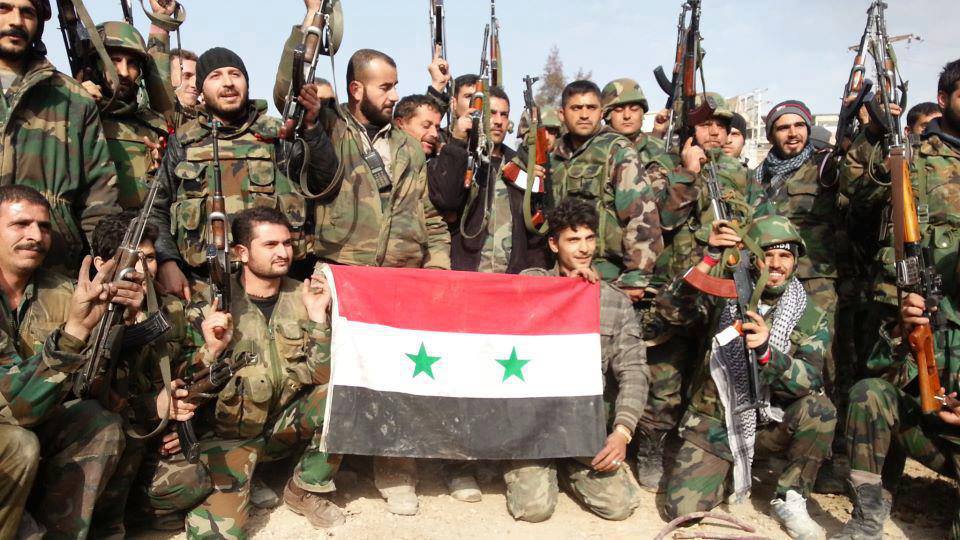
Along with the arriving SAA units came allied militiamen, including forces from Hezbollah. It had taken the units nearly a month of fierce fighting, slowly advancing along the desert roads of Deir Ezzor towards the besieged base. In a classic pincer movement, they flanked both the eastern and western sides of enemy positions in and around the base area.
Syrian soldiers embrace comrades trapped in #DeirEzzor after breaking 3-year ISIS siege (EXCLUSIVE VIDEO) https://t.co/qG7Fi9r7b0 pic.twitter.com/BM8RtA0KEh
— RT (@RT_com) September 5, 2017
[Syrian soldiers embrace comrades trapped in Deir Ezzor after breaking 3-year ISIS siege][Courtesy RT]
For years the Artillery Base has been one of many Alamos in the battle against the Islamic State, always on the brink of being overrun, manned by a diminishingly small number of men with sparse resources. With the SAA breaking through enemy lines arriving with reinforcements and supplies, the siege was broken. At long last the SAA had been able to re-establish its link to the base, and with it, the hope of liberating Deir Ezzor reemerged.
Once the base had been reached, the lionshare of the men regrouped and headed out towards the surrounding neighborhoods, inside the outskirts of the city of Deir Ezzor. In part this was done to create a security buffer for the now reasonably secured base area, but also to give the SAA soldiers and the residents in the area a much deserved and needed morale boosting victory.
Upon entering the outlining neighborhoods, the soldiers were met by cheering residents. Syrian State television was already on the scene ahead of the advancing troops to document the warm reception of the newly liberated neighborhoods. Hours earlier, in anticipation of the arriving SAA reinforcements, the brunt of the Islamic State fighters in the immediate area of the Artillery Base had fallen back to easier, defendable areas.
An attempt by Islamic State fighters to regroup in Ash Sholah was prevented by the frigate Admiral Essen, from the Russian Black Sea Fleet, which lay in the Mediterranean providing supportive missions. The ship launched a series of KALIBR-cruise missiles against known enemy gathering positions, striking and destroying several gathering locations. The frigate was also able to launch missiles against an ammunition depot in the al-Bghiliyeh village.
СИРИЯ #ВИДЕО Объективный контроль попадания крылатых ракет «Калибр» по объектам террористов на территории САР в районе Дейр-эз-Зора pic.twitter.com/rgqAaykxMV
— Минобороны России (@mod_russia) September 5, 2017
An estimated 93,000 civilians had been trapped for the past 3 years in the neighborhood enclaves now liberated in the past few days. Since the fall of Deir Ezzor to the Islamic State in 2015, the area has only seen erratic airdrops of food and supplies by Russian and Syrian air forces.
The first aid convoys arrived to the enclaves in the early hours of September 6th; 40 trucks carrying 1,000 tonnes of food and household supplies. Additional aid is expected to begin to arrive during the afternoon. Non-Governmental Organizations (NGOs), such as the Red Crescent, will also soon be able to steadily deliver food and medical supplies.

The coming days will no doubt see the mounting of large scale operations, including additional helicopter gunships and tanks, to continue pushing the Islamic State frontlines back. Despite recent battle successes for the SAA, along with affiliated militias, the majority of the city of Deir Ezzor and province remain under Islamic State control believed to be well over 60% of the Deir Ezzor districts and neighborhoods. It is widely believed that it will take weeks, if not months, for the Damascus government affiliated forces to secure the bulk of these areas.
As our SDF partners defeat ISIS militarily, they are also addressing humanitarian needs, assisting with the evacuation of civilians.
— OIR Spokesperson (@OIRSpox) September 7, 2017
Advancements, once forces enter deeper into the city, will no doubt become sluggish. This due to the expected entrenched resistance and explosives that are believed to be present. The area has been under near absolute control by the Islamic State since 2015, and if the battles in al Raqqa, Tal Afar, Mosul, and Aleppo, are to be any indicators, the city will be riddled with explosive devices. The battle to secure Deir Ezzor is expected by all to be a bitter and costly one.
During a Syrian State television broadcasted statement Syrian President Bashar al-Assad congratulated his troops on breaking the siege, stating that they must fight until “the last inch” of Syria is back under Damascus control.
The liberation of the base, and the immediate areas around it, reflects the Syrian government’s intense focus on retaking the area. With Deir Ezzor being home of over a million civilians, holding one of Syria’s largest oil and gas reserves, and being a logistical hub for trade and travel to Iraq, control over it is deemed vital. In recent weeks operations have been expedited and units in the areas have been reinforced. The logic behind this is chiefly found in the need for the Damascus government to hold key strategic areas in the civil war torn nation. If Damascus cannot control the area, it will disrupt the Shia controlled corridor and the ability of Iranian affiliated troops to enter the Syrian Civil War in support of Assad’s government.
In addition to this, the Russian and Iranian supported SAA have competition as to who will enter, and hold, Deir Ezzor by its majority. The US-supported and Kurdish led Syrian Democratic Forces (SDF) have amassed farther north in preparation to enter the fray. While the Kurdish leadership would likely approach the matter in a pragmatic sense, if it were to hold terrain that the Syrian and Iranian governments wish to control, such dealings will weaken the already withered power position of Damascus.
The gravity and interest that the Deir Ezzor campaign carries to the Damascus government is quite obvious. For instance, Russian President Vladimir V. Putin stated that the Deir Ezzor operations are a “strategically important victory over terrorists.”
https://youtu.be/mNibLsf-SXk
The Syrian Civil War ostensibly began in March 2011, with anti-government protests which the government responded to with brute force. The combination of the government response, along with the overall instability in the region, sparked the fire that would see the death of more than 330,000 people in Syria. Now the Damascus government has everything to win if it can play its cards right. If it can ensure that its Deir Ezzor campaign is viewed by most, if not all, as a positive one, it can decide a large portion of how the next phase of the Civil War is carried out. If the government can prove that it can provide suitable humanitarian aid and security to the newly liberated areas, it can use the good will as part of its Psychological Operations (PSYOP) campaign towards the battle weary civilian population. If successful, such a PSYOP campaign could nearly completely erode support for further fighting by anti-government rebel organizations.
With all parties presently engaged in the multifaceted array of Syrian conflicts, there is little doubt that once the relatively unifying enemy found with the Islamic State is removed as a strategic threat, the fires of the Civil War will again come to life. With the Islamic State losing relevance by the day and quickly becoming a footnote in history, the day for the Civil War to surge again is soon. As such, the moves being made by all today, carried out in the name of fighting the Islamic State, are what will shape the next war.
John Sjoholm, Lima Charlie News
John Sjoholm is Lima Charlie’s Middle East Bureau Chief, Managing Editor, and founder of the consulting firm Erudite Group. A seasoned expert on Middle East and North Africa matters, he has a background in security contracting and has served as a geopolitical advisor to regional leaders. He was educated in religion and languages in Sana’a, Yemen, and Cairo, Egypt, and has lived in the region since 2005, contributing to numerous Western-supported stabilisation projects. He currently resides in Jordan. Follow John on Twitter @JohnSjoholmLC
Lima Charlie World provides global news, featuring insight & analysis by military veterans, intelligence professionals and foreign policy experts Worldwide.
For up-to-date news, please follow us on twitter at @LimaCharlieNews
In case you missed it:

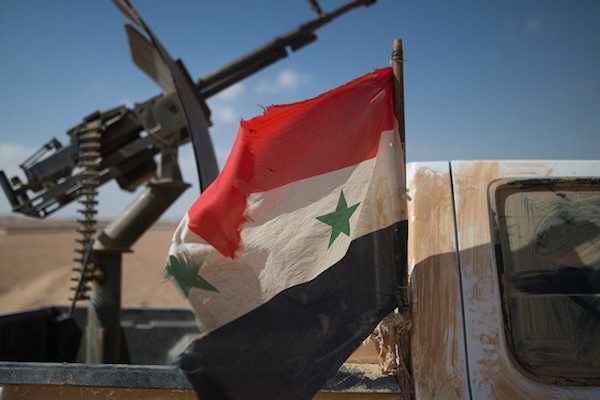
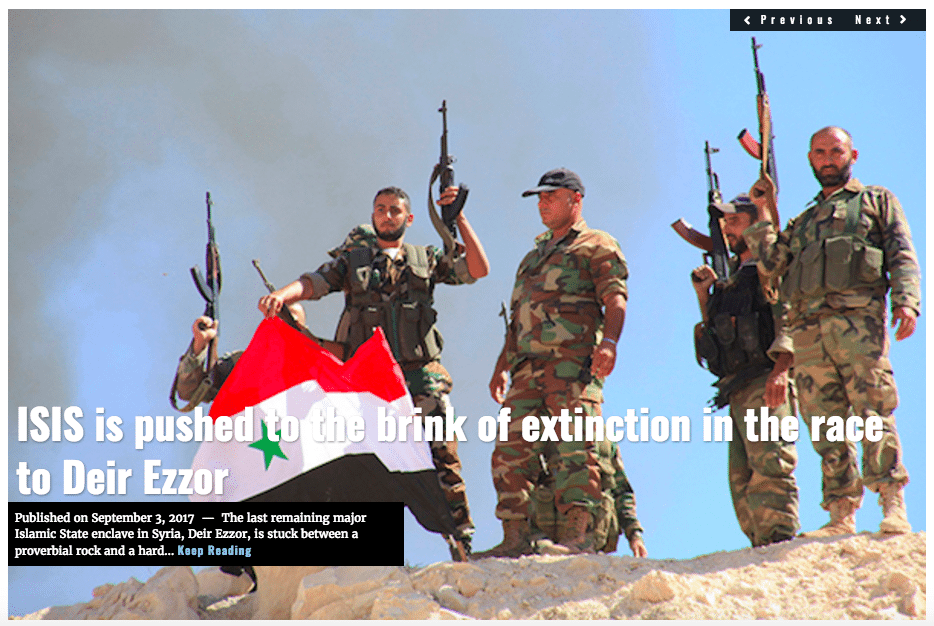

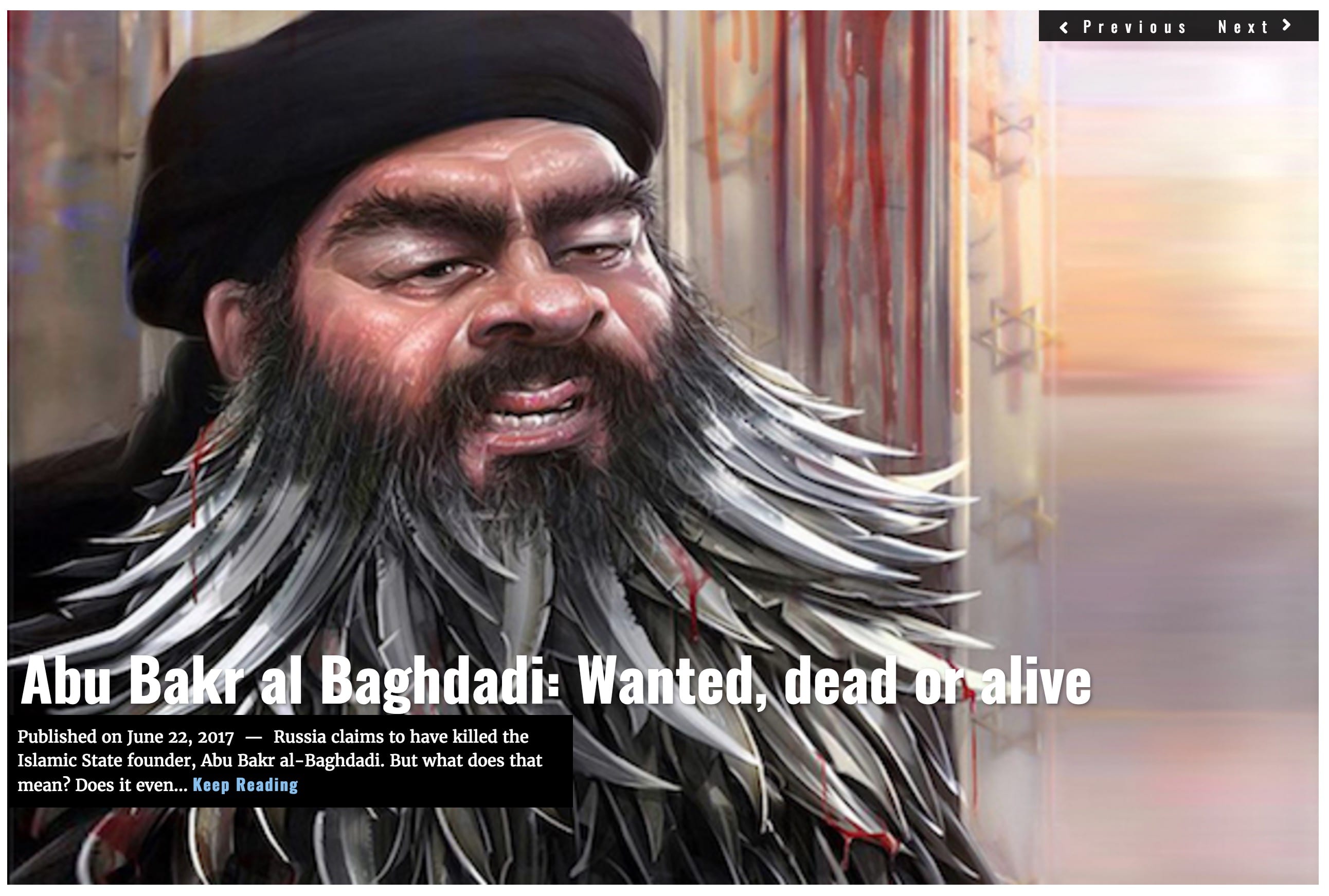

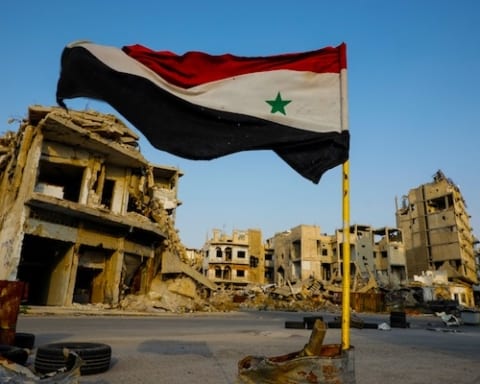
![Syria’s oil, gas and water - the Immiscible Solution to the War in Syria [Lima Charlie News][Photo: ANDREE KAISER / MCT]](https://limacharlienews.com/wp-content/uploads/2019/05/Syria’s-oil-gas-and-water-480x384.png)


